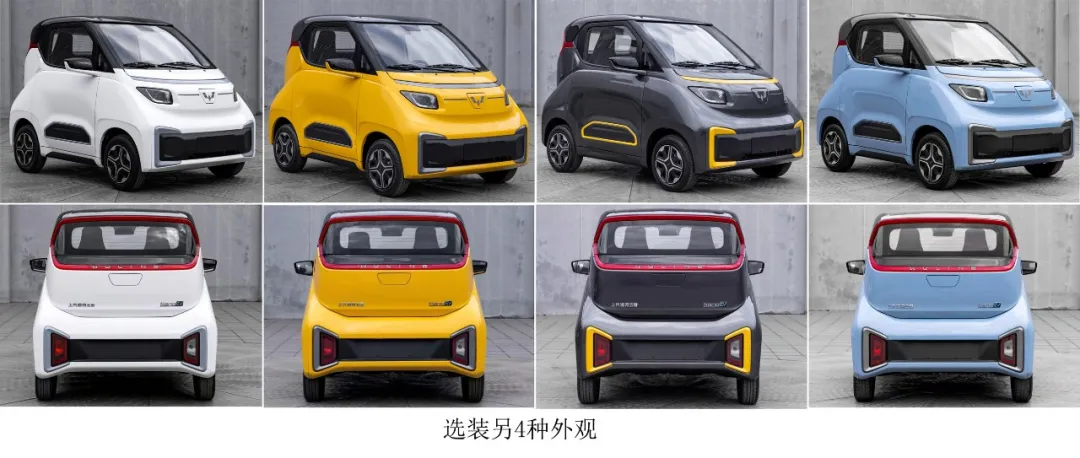Author: Tian Hui
The trend of mini electric cars led by the Hongguang MINI EV is about to come. In addition, the resurgence of lithium iron phosphate has entered a new climax, with more than 50% of the declared new pure electric vehicles equipped with lithium iron phosphate batteries.
On April 12th, the Ministry of Industry and Information Technology approved and announced the 343rd batch of “Road Motor Vehicle Manufacturers and Products Announcements” for application.
In all the vehicle models announced in this batch, there are a total of 276 new energy vehicles, including 42 new energy passenger cars, which is relatively less than the number declared in the previous period.
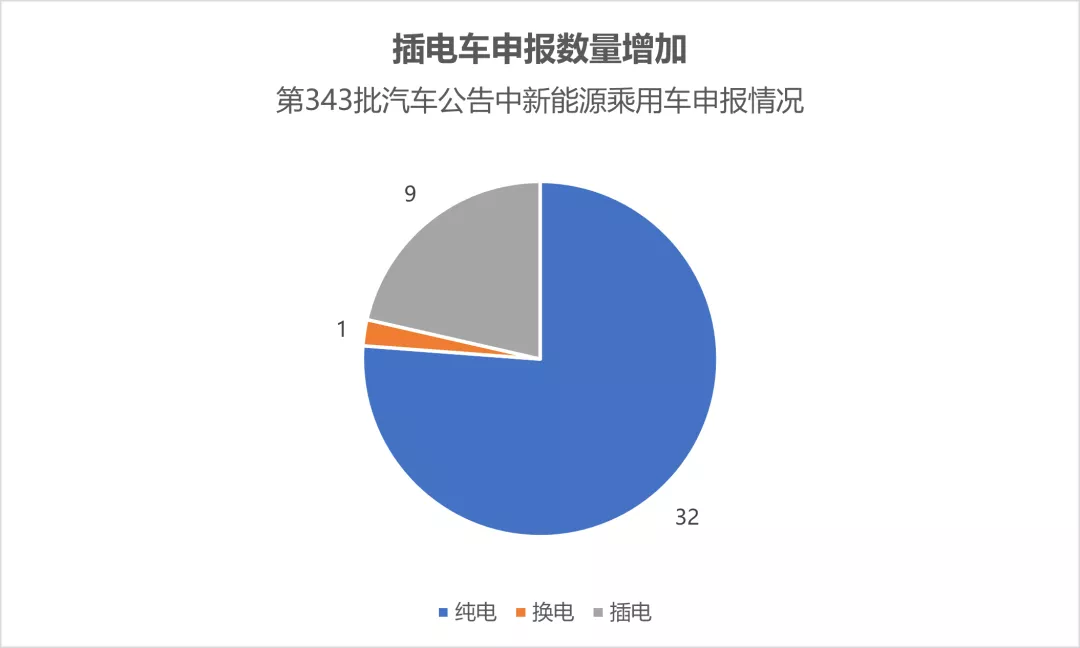
For pure electric vehicles, there are 32 pure electric sedans, 1 swappable battery pure electric sedan, and 17 pure electric multi-purpose vehicles.
For plug-in hybrid vehicles, three brands including LiXiang, Voyah, and Great Wall Wei declared three models, a total of 9 plug-in hybrid multi-purpose passenger cars.
There are not many new models declared in this batch, Voyah Automobile has applied for both extended-range and pure electric versions of its vehicles, while Great Wall Wei has applied for the Magic PHEV version.
In terms of facelift models, the LiXiang ONE and Guangqi Aion S are worth noting.
It is noteworthy that there are 19 models of mini electric vehicles declared, showing increased competition in this category. In addition, in all the declarations of battery-matching for pure electric passenger vehicles in this announcement, the number of models with lithium iron phosphate batteries surpassed that of ternary lithium batteries.
Dominance of Pure Electric Mini-Cars
In the passenger car part of the 343 batch of automobile announcement declarations, a trend is worth noting: 7 manufacturers declared a total of 19 pure electric mini-cars, accounting for 60% of all pure electric sedan models.
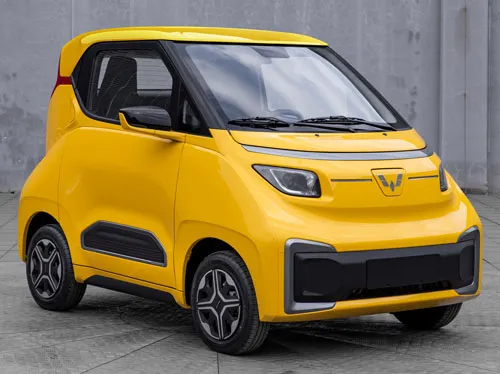
Among many mini cars, SAIC-GM-Wuling’s Wuling NANO EV, which is based on the Baojun E200 and has the Wuling logo, is the most noteworthy.
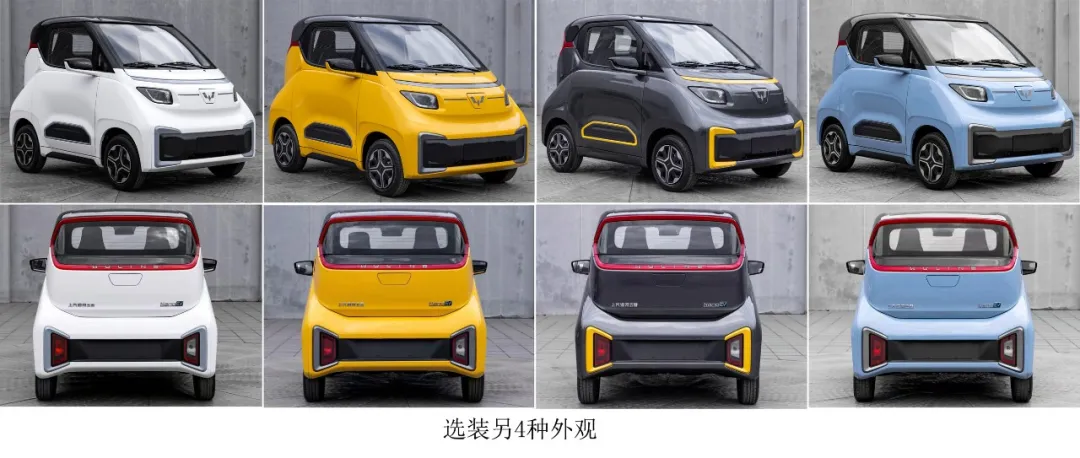
Wuling NANO EV has declared a total of 4 exterior colors. Compared with Baojun E200, it has been re-designed in the front and rear bumpers and has two-tone body color for consumers to choose.
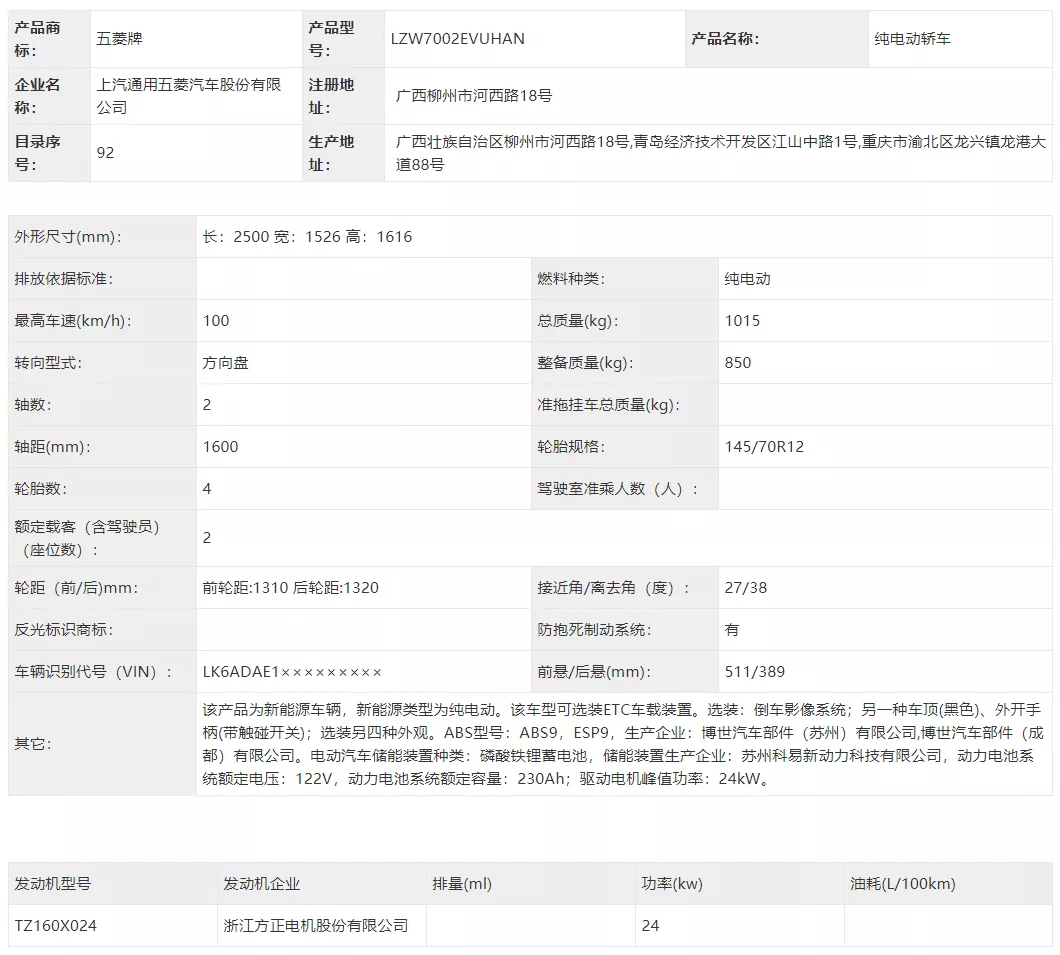
Wuling NANO EV has a length of 2500mm, which is shorter than the MINI EV.Regarding the power system, Wuling NANO EV adopts a lithium iron phosphate power battery provided by Suzhou Key New Energy Technology Co., Ltd., with a rated voltage of 122 V, a rated capacity of 230 Ah and a total battery capacity of 28.06 kWh. As for the motor, the vehicle uses a 24 kW peak power motor provided by Fangzheng Motor.
In the previous application for the Baojun E200, which also used the same power system, the vehicle’s driving range reached 305 km. Therefore, it is expected that the Wuling NANO EV will also have a driving range of 305 km.
In terms of vehicle positioning, as the Wuling NANO EV only has a capacity of 2 persons, but a longer driving range than the MINI EV, the vehicle may be positioned as a high-end 2-seater commuter car.
In this batch, Wuling also applied for two MINI EV models, which are identical to the previously applied models.
After the popularization of the Wuling Hong Guang MINI EV, many automakers have followed suit and introduced a variety of mini commuter pure electric vehicles.
In this announcement, BAIC applied for the EC series of follow-up models, and Changan applied for the Benben E-Star model. Lingbao, Yema and other manufacturers also applied for mini pure electric vehicles.
The mini pure electric car declared by Chuanqi Yema in this batch is named “Leiding Auto Mengo,” which is actually a model launched by Leiding Auto after acquiring the Chuanqi Yema brand.
On April 12th, the car just completed its offline ceremony, with a starting price of 29,800 yuan and three driving range options: 130 km, 185 km, and 300 km.
In this batch of car announcements, Chuanqi Yema declared a total of six mengo models, all of which use lithium iron phosphate batteries.
As for high-end pure electric cars, GAC Aion applied for the revised version of the Aion S.
In terms of appearance, the revised Aion S has been redesigned in the front and adds new wheel hub styles, while the taillights have also been redesigned.
In this announcement, Aion S applied for two revised models, both of which use ternary lithium batteries provided by China Aviation Lithium Battery Co., Ltd.In the pure electric multi-purpose passenger car (pure electric SUV) category, both North and South Volkswagen declared the ID.6 dual-motor version, with the front motor using an AC asynchronous motor, and the rear motor using a permanent magnet synchronous motor, with peak power of 80 kW and 150 kW, respectively.
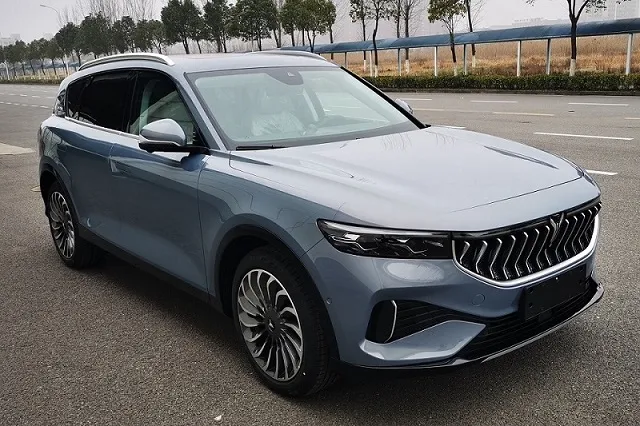
In this batch declaration, Voyah Motors also declared the Voyah FREE pure electric and extended-range models.
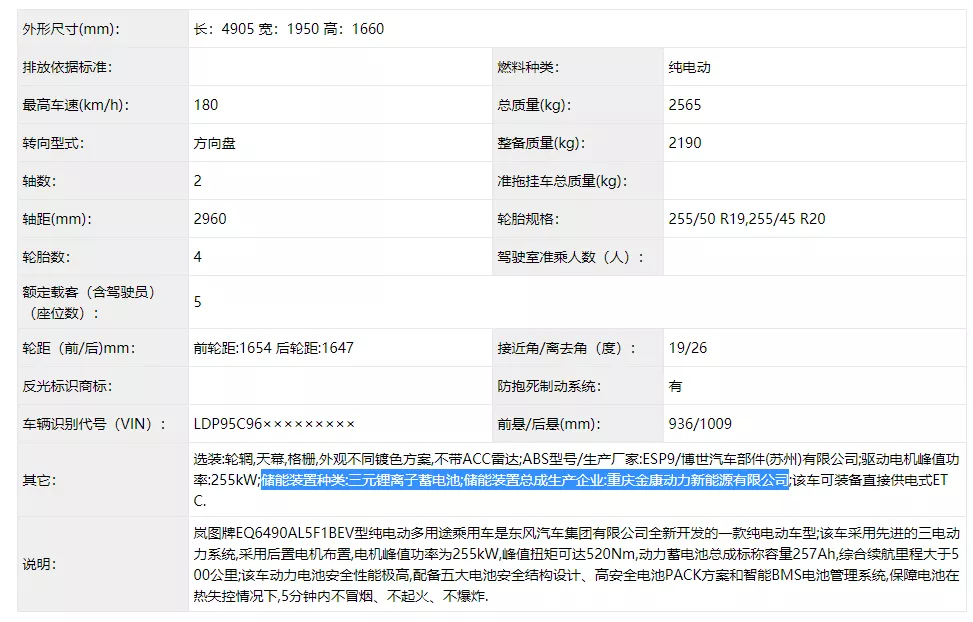
Voyah FREE declared both two-wheel drive and four-wheel drive models, but both pure electric models use lithium-ion batteries supplied by Chongqing Jinkang Power New Energy Co., Ltd.
What is particularly special is that the description section in Voyah FREE’s declaration is extremely rich in information and includes a statement that “the battery is guaranteed not to smoke, ignite, or explode within 5 minutes in the event of thermal runaway”.
It is rare for declaration information submitted to the automotive regulatory authority to explicitly state commitments. For car companies, this behavior showcases their technical strength but also puts them under enormous pressure.
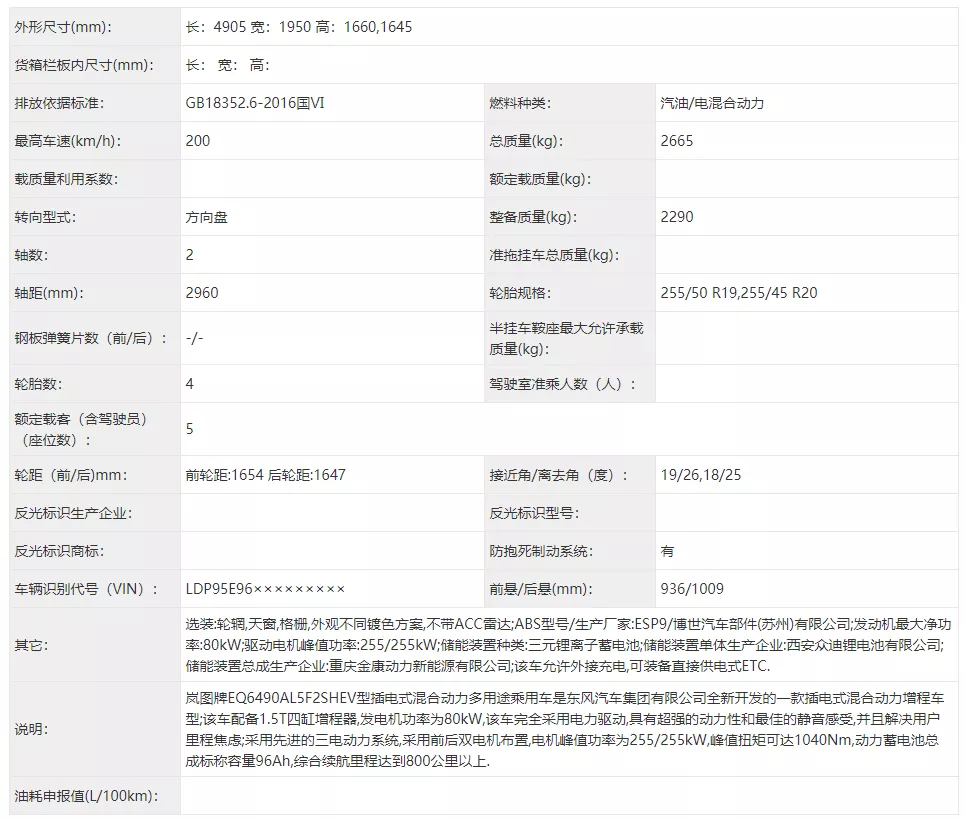
The extended-range Voyah FREE model declared this time uses the same battery supplier, Chongqing Jinkang Power New Energy Co., Ltd., and also notes that the cell supplier is Xi’an Zongdi Lithium Battery Co., Ltd.
Unlike the pure electric version, the extended-range Voyah FREE model’s description does not include the statement “the battery is guaranteed not to smoke, ignite, or explode within 5 minutes in the event of thermal runaway”, but mentions that “the car is equipped with a 1.5T four-cylinder range extender, with a generator power of 80 kW, and the car is completely electrically driven”. The model’s cruising range is introduced, with a total of over 800 kilometers.
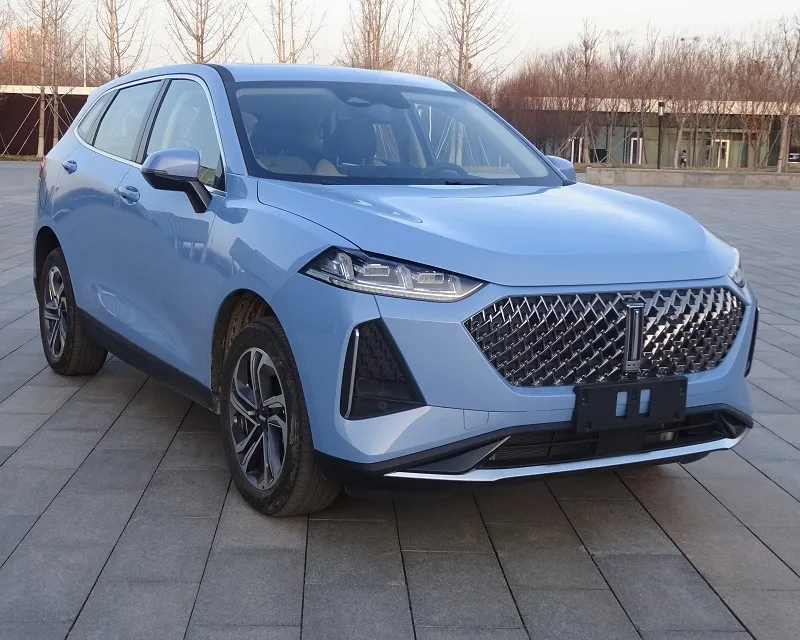
In this batch declaration, Great Wall Motors declared the Weipa Marquis PHEV, which is the first plug-in hybrid model based on Lemon DHT hybrid technology.
The car’s battery uses lithium-ion batteries supplied by Honeycomb Energy.In this announcement, IDEAL Automotive declared 6 models of IDEAL ONE, which are 10 mm longer than the current models, reaching 5030 mm, and are expected to be the redesigned models that consumers have been waiting for.
Lithium Iron Phosphate Battery is Back with A Bang
Among the newly declared pure electric cars in this announcement, over 50% of them are equipped with Lithium Iron Phosphate batteries, compared to all other pure electric cars.
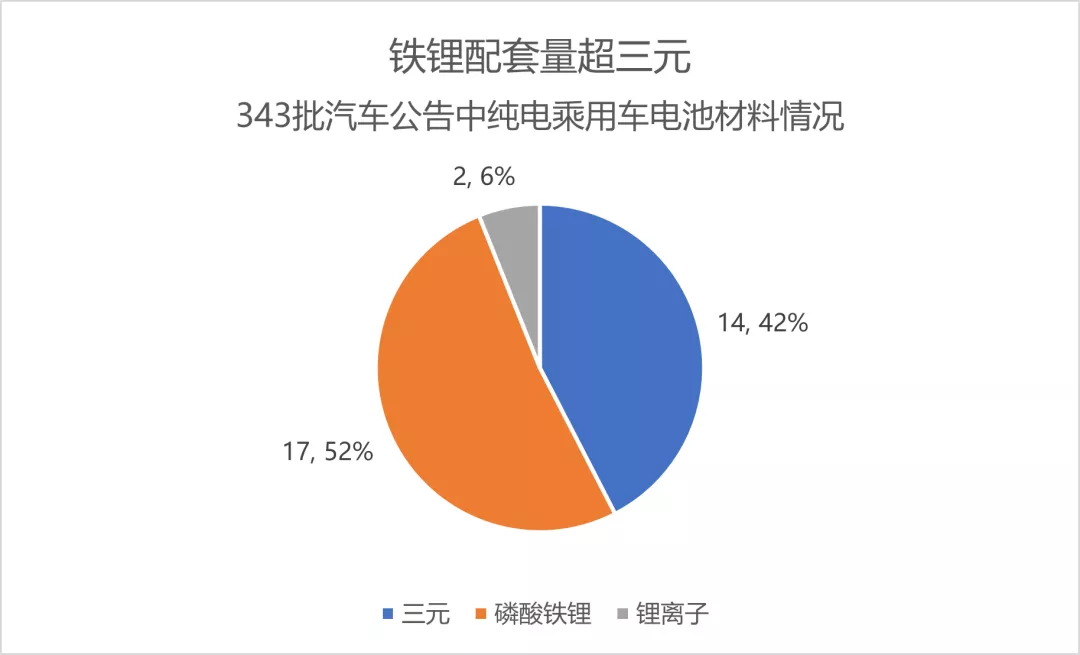
The reason for this phenomenon is that there are more micro-electric vehicles among the newly declared cars, most of which use Lithium Iron Phosphate batteries. However, high-end pure electric vehicles still use ternary lithium batteries as the main power source.
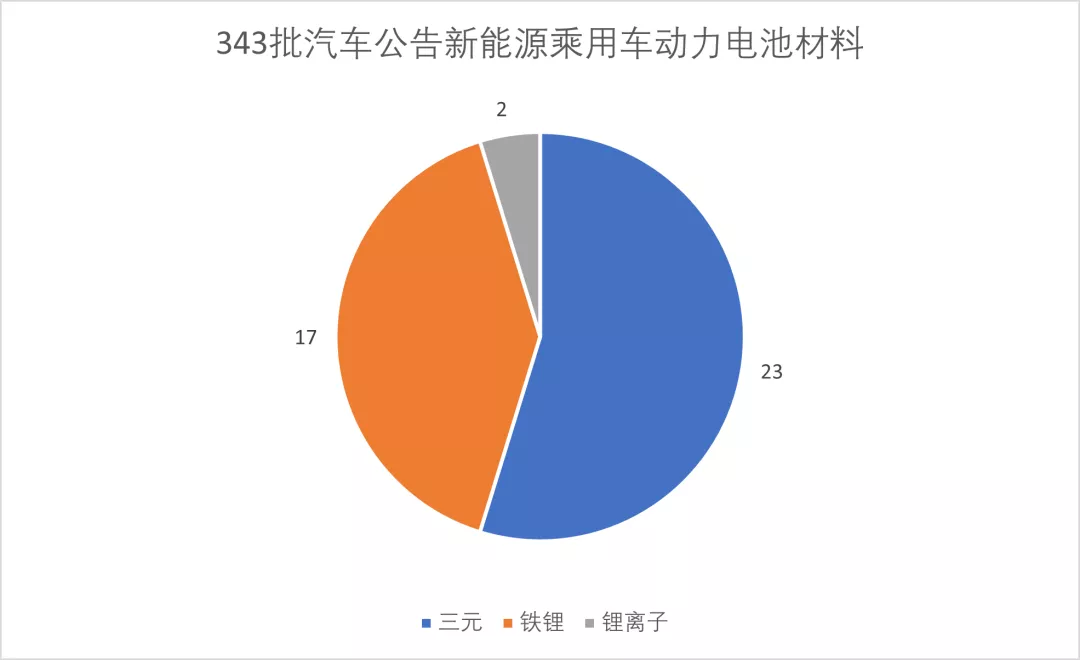
Among the total 42 new energy passenger cars, 9 plug-in hybrid models are all ternary lithium battery-based, which makes ternary lithium battery-powered cars still in the dominant position among new energy passenger cars as a whole.
Based on the declaration records of previous rounds, low-end pure electric vehicles have extensively switched to Lithium Iron Phosphate batteries, while high-end pure electric and plug-in vehicles follow the power battery technology path of ternary lithium batteries, which should be the mainstream technology path in the future.
This article is a translation by ChatGPT of a Chinese report from 42HOW. If you have any questions about it, please email bd@42how.com.
